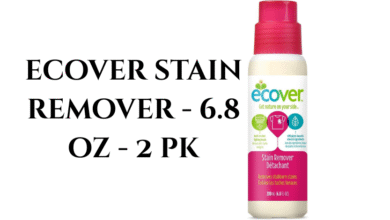What is Lisphanol? A Complete Guide to This Chemical Compound

In the ever-evolving world of science, new chemical compounds and their potential applications are constantly being discovered. One such compound that has garnered attention in recent years is Lisphanol. But what exactly is Lisphanol, and why should it matter to scientists, researchers, and the general public? In this article, we will delve deep into the characteristics, properties, potential uses, and safety aspects of Lisphanol. We will also explore its significance in various industries, shedding light on its role in chemistry, health, and beyond.
Understanding Lisphanol: What You Need to Know
Lisphanol is a synthetic chemical compound that falls under the broader category of organic molecules. Though it may sound unfamiliar to many, Lisphanol is an intriguing substance that has several potential applications in industries ranging from pharmaceuticals to manufacturing.
The chemical structure of Lisphanol consists of complex carbon chains and functional groups that contribute to its unique properties. Scientists and industry professionals are increasingly studying Lisphanol for its potential benefits, especially in areas such as medicine, drug delivery systems, and even environmental sustainability.
Chemical Structure and Properties of Lisphanol
Lisphanol belongs to the phenolic compound family, which includes a variety of organic compounds known for their aromatic characteristics and ability to participate in chemical reactions. Phenols are often found in natural substances like plants, but Lisphanol is a synthetically engineered compound.
Key Features of Lisphanol:
-
Molecular Formula: C₁₈H₂₀O₂
-
Appearance: Crystalline solid, typically white or off-white in color
-
Solubility: Soluble in organic solvents like ethanol and acetone
-
Melting Point: Around 135-140°C
-
Boiling Point: Not well-documented due to limited widespread use
These properties are just the beginning of what makes Lisphanol so promising for various applications.
Applications of Lisphanol
1. Pharmaceutical Uses: Drug Delivery and Bioactive Compounds
Lisphanol has shown great potential in the development of drug delivery systems. The compound’s ability to form stable bonds with other molecules makes it an ideal candidate for carrying active pharmaceutical ingredients (APIs) to targeted areas within the human body.
Benefits for Pharmaceuticals:
-
Controlled Release: Lisphanol’s chemical structure allows it to be used for controlled and sustained release of drugs, improving their efficacy over time.
-
Targeted Delivery: It has been studied for its potential to enhance the targeting of drugs to specific cells or tissues, reducing side effects.
-
Enhanced Bioavailability: Lisphanol has been researched for its ability to improve the absorption of certain drugs in the body.
2. Environmental Applications: Sustainable Chemistry
As the world moves toward more eco-friendly solutions, compounds like Lisphanol are being explored for their sustainability potential. Due to its chemical structure, Lisphanol could play a role in creating biodegradable materials and environmentally safe industrial processes.
Potential Environmental Benefits:
-
Non-toxic: Unlike many synthetic chemicals, Lisphanol is being studied for its low toxicity levels, making it a safer alternative in manufacturing.
-
Eco-friendly: Lisphanol could replace harmful petrochemical-based compounds used in plastics, reducing pollution and environmental damage.
3. Industrial and Manufacturing Uses
In addition to its pharmaceutical and environmental potential, Lisphanol also has a place in the chemical industry. Its unique properties make it useful in manufacturing processes where stability, strength, and durability are needed.
-
Polymer production: Lisphanol may be integrated into the production of high-strength polymers used in aerospace, automotive, and construction industries.
-
Coating materials: Its ability to form strong bonds makes it a candidate for use in protective coatings in manufacturing.
Benefits of Lisphanol
Lisphanol holds promise across multiple sectors due to its diverse range of benefits. These benefits are what make it so appealing for continued research and development.
Key Benefits:
-
Enhanced Chemical Stability: Lisphanol’s molecular structure offers exceptional stability, which is essential in pharmaceutical and industrial applications.
-
Low Toxicity: For both humans and the environment, Lisphanol is relatively non-toxic, reducing the risks associated with its use.
-
Versatility: Its diverse applications from pharmaceuticals to eco-friendly manufacturing highlight its potential for cross-industry use.
-
Improved Efficacy in Drug Delivery: The controlled release and targeting mechanisms offered by Lisphanol can significantly improve treatment outcomes.
Risks and Safety Considerations
Like any chemical compound, Lisphanol is not without its risks. While it is generally considered safe in low doses, there are a few considerations to be aware of, especially when dealing with its industrial applications.
Safety Precautions:
-
Proper Handling: Lisphanol should be handled with care, especially in laboratory and manufacturing settings, as large quantities could lead to chemical reactions that pose a hazard.
-
Environmental Impact: Although it is considered eco-friendly, excessive waste during production or improper disposal could still harm the environment. Therefore, sustainable manufacturing practices must be in place.
Toxicity and Exposure Limits:
Although Lisphanol’s toxicity profile is promising, exposure in high concentrations can lead to mild irritations or more severe chemical reactions. Workers involved in handling the compound should be equipped with the necessary protective equipment, such as gloves, safety glasses, and ventilation systems.
Comparisons: Lisphanol vs. Other Phenolic Compounds
To better understand the unique properties of Lisphanol, let’s compare it to other commonly known phenolic compounds.
| Property | Lisphanol | Phenol | Bisphenol A (BPA) |
|---|---|---|---|
| Molecular Weight | 268.35 g/mol | 94.11 g/mol | 228.29 g/mol |
| Toxicity Level | Low | High | Moderate |
| Industrial Uses | Pharmaceutical, Environmental | Disinfectants, Plastics | Plastics, Resins |
| Eco-friendly Rating | High | Low | Low |
As you can see, Lisphanol stands out for its low toxicity and high eco-friendly rating, making it an excellent alternative to other phenolic compounds, especially in environmentally-conscious industries.
The Future of Lisphanol: What’s Next?
While Lisphanol has already proven its worth in various applications, the future is even more exciting. Ongoing research is exploring new biomedical and environmental uses for this compound. As we continue to seek sustainable alternatives in manufacturing and healthcare, Lisphanol could play a central role in shaping industries to be more efficient and eco-friendly.
Areas of Ongoing Research:
-
Nanotechnology: Lisphanol’s potential as a nanomaterial for drug delivery systems is being studied, where its ability to form stable and controlled bonds could revolutionize the way medicines are administered.
-
Biodegradable Materials: Research into replacing harmful plastics with Lisphanol-based biopolymers is underway, making it a candidate for creating sustainable consumer products.
Frequently Asked Questions (FAQ)
1. What is Lisphanol used for in pharmaceuticals?
Lisphanol is primarily used in drug delivery systems where it helps in the controlled release and targeted delivery of drugs. It improves bioavailability and reduces side effects.
2. Is Lisphanol eco-friendly?
Yes, Lisphanol has been recognized for its low toxicity and potential in sustainable chemistry. It is considered safer for both humans and the environment compared to many traditional synthetic compounds.
3. Can Lisphanol replace Bisphenol A (BPA)?
Due to its lower toxicity and better environmental profile, Lisphanol has the potential to replace BPA in several industrial applications, especially in manufacturing eco-friendly materials.
4. Is Lisphanol safe for use in consumer products?
When used properly, Lisphanol is considered safe for consumer products, especially in the form of coatings, plastics, and other materials. However, proper regulations must be followed to ensure safety during production and disposal.



